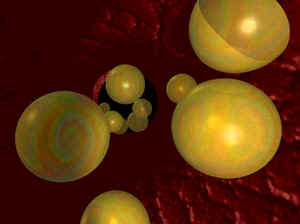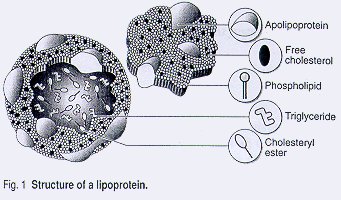
Cholesterol Transport:
Good
and Bad Cholesterols and their affect on Health.
It is commonly known that a high level of cholesterol in the blood – hypercholesterolemia- poses a risk for coronary heart disease and heart attack. Cholesterol is insoluble in the blood, it is transported to and from the cells by carriers known as lipoproteins.

Cholesterol in the bloodstream: http://www.journaloflongevity.com/JOLWeb/Archives/84/cholesterol.html
Low-density
lipoprotein (LDL) or “Bad Cholesterol”
is the major cholesterol carrier in the blood. If too much LDL cholesterol
circulates in the blood, it can slowly build up in the walls of the arteries
feeding the heart and brain. Together with other substances it can form plaque,
a thick, hard deposit that can clog those arteries (a condition known as atherosclerosis).
A clot (thrombus) forming near this plaque can block the blood flow to part
of the heart muscle resulting in a heart attack or it can block the blood flow
to part of the brain, causing a stroke.

http://grimwade.biochem.unimelb.edu.au/howlett/lipoweb/lipo.html
High-density
lipoprotein (HDL) or “Good Cholesterol”
carries about one-third to one-fourth of blood cholesterol. Experts think HDL
tends to carry cholesterol away from the arteries and back to the liver, where
it is metabolised and removed. It
is believed that HDL can remove excess cholesterol from plaques and
therefore slow their growth. However, while a high level of HDL decreases the
associated risks, a low level of HDL cholesterol level may increase the
possibility of stroke or heart attack.